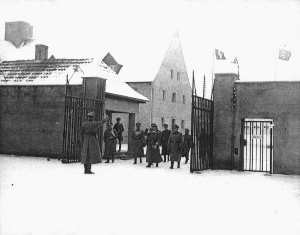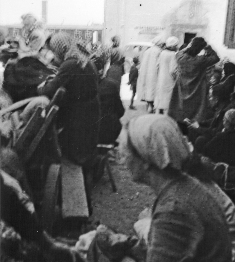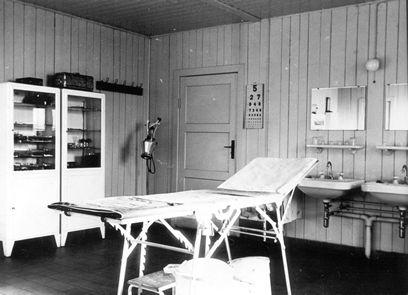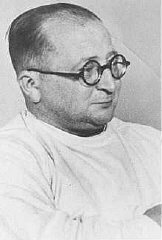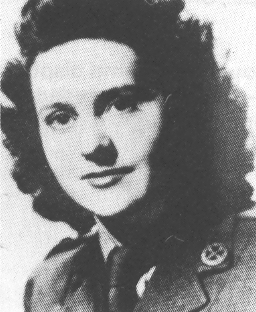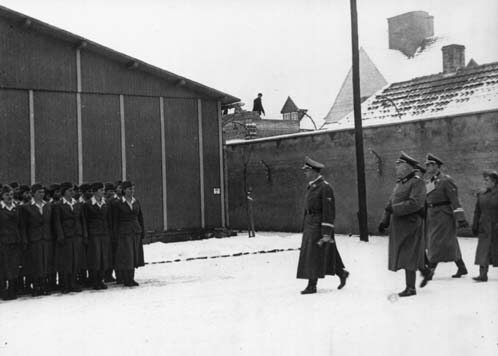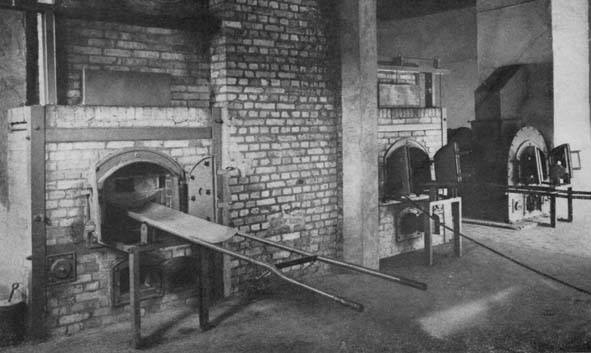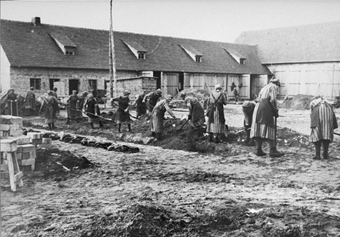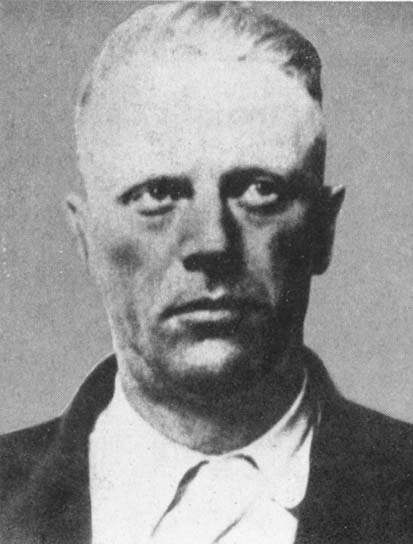Holocaust Education & Archive Research Team |
|
Other Camps
Key Nazi personalities in the Camp System The Labor & Extermination Camps
Auschwitz/Birkenau Jasenovac Klooga Majdanek Plaszow The Labor Camps
Trawniki
Concentration Camps
Transit Camps
|
|||||
Ravensbrucke Concentration Camp
Ravensbrucke was a concentration camp near the village of Ravensbrucke on the Havel River, two thirds of a mile from the Furstenberg railway station and fifty-six miles north of Berlin.
On 15 May 1939 a concentration camp for women was opened there, and on 18 May, 867 female prisoners were transferred there from the Nazi concentration camp at Lichtenburg, together with the camp commandant SS- Hauptsturmfuhrer Max Kogel.
Kogel remained in this post until the summer of 1942 when he was replaced by SS-Hauptsurmfuhrer Fritz Suhren, who was the commandant until the liberation of the camp in May 1945.
The prisoners’ numbers began with 1,416, since a total of 1,415 prisoners had been transferred from Lichtenburg. The camp structure was similar to that of other Nazi concentration camps, with 150 female supervisors added to the men who served as guards and held administrative.
The female supervisors were SS volunteers or women who had accepted the post for the sake of the better pay and work conditions it offered, compared to work in factories.
In 1942 and 1943 Ravensbrucke also had a training base for female SS supervisors – the 3,500 women who underwent training there served at Ravensbrucke and at other concentration camps.
In late 1939 Ravensbrucke had 2,000 prisoners, and by the end of 1942 the number had grown to 10,800. in 1944 another 70,000 prisoners were brought to Ravensbrucke, from which most were transferred to one of the thirty-four Ravensbrucke satellite camps
Some of these satellite were situated far away from Ravensbrucke, for example in Mecklenburg, Bavaria and the Protectorate of Bohemia and Moravia. Most of these satellite camps were attached to military industrial plants, and one such plant was also put up near Ravensbrucke itself.
In 1944 the main Ravensbrucke camp had 26,700 female prisoners as well as several thousand girls in a detention camp for minors. In April 1941 a concentration camp for men was established near the Ravensbrucke camp, but for official purposes it was a satellite of Sachsenhausen concentration camp. Approximately 20,000 male prisoners passed through this camp during the years of its existence, 16 percent of them Jews.
In early 1945 Soviet prisoners of war in the men’s camp were recruited for the Vlassov army, while German prisoners were drafted into Oskar Dirlewanger’s SS brigade.
By early February 1945, 106,000 women had passed through the Ravensbrucke camp, twenty-five percent of them were Polish, twenty percent German, nineteen percent Russian and Ukrainian, fifteen percent Jewish, seven percent French, five and half percent Gypsies and eight and a half percent others.
From the summer of 1942 medical experiments were carried out at Ravensbrucke, one such project, directed by Professor Karl Gebhardt, made use of sulphonamide to treat festering wounds and bone transplants.
The victims were some seventy-four prisoners, most of them young Polish women suspected of belonging to the Polish underground. Another experiment, conducted by Professor Carl Clauberg, involved sterilisation – thirty –five women were the victims of these experiments, most of them gypsies.
In the early stage of the camps existence the method used for killing prisoners was to shoot them in the back of the neck. In 1942 the prisoners who were condemned to death were sent to euthanasia institutions such as Bernburg or to Auschwitz, or they were later killed in Ravensbrucke with phenol injections.
Their bodies were cremated at the nearby Furstenberg crematorium, but when the number of victims grew, in April 1943, Ravensbrucke had its own crematorium installed, near the camp for minors.
British SOE agent Odette Marie-Sansom described her arrival at the camp:
“Submerged among the Ukrainians, Odette Sansom walked slowly because she was weak and sick and burning with thirst and because it was painful to put her mutilated feet to the ground. As the bedraggled cavalcade wound past the end of the lake, the high walls of the camp came into view. A machine –gun post: a grey wall: a black door, twenty feet high.
Then, silencing the tuneless song of the Ukrainians, another song came to the ears of the women, as a parallel column of female creatures in striped sacking marched briskly past. Their heads were shaven, their eyes were dead and the skin was drawn tightly back from the bones of their faces so that they were rows of skulls marching.
They stepped out in time to the crack of an SS woman’s whip, and by order, they sang a merry song, opening and shutting the caverns of their mouths in macabre melody. The black door of the camp swung open at their approach and on the heels of these scarecrow travesties of womanhood, the new entry shuffled into Ravensbrucke.
The door swung to, and the bolts were shot, it was in the evening of 18 July 1944 when Odette limped through the black door of Ravensbrucke, and with the Ukrainians crossed a square and followed the main street of the camp that ran between lines of oblong huts to the washroom.”
Shortly after her arrival Odette was taken to see the Commandant Fritz Suhren who ordered Odette would be imprisoned in the camp bunker:
“The door of the bunker was opened by a woman in SS uniform, Margarete Mewes, a peevish, mean little harlot with a bovine face and a receding chin. She and the Gestapo man spoke together and he beckoned to Odette.
She took one last look around the blue depths of the sky, as if she were trying to absorb all its clarity and all its light into her very self. Then she stepped into the Bunker."
There was a short passage with a barred gate at its end, its spikes touching the floor and ceiling. On one side of the passage were the cheerful rooms occupied by the SS. The wardress unlocked the gate with the key at her waist and Odette walked through to the inner bunker. The gate swung to on the spring lock.
Before her was a flight of stairs, leading downwards. She descended them and walked along an underground passage, white with electric light. The wardress unlocked a door and Odette stepped into a cell whose darkness was opaque.
In the face of the Russian advance Heinrich Himmler paid a visit to Ravensbrucke to lay down policy. The prisoners who were still capable of working and marching should be taken away, those who were ill or old or lame should be killed.
To assist Commandant Suhren in his picking and choosing, Johann Schwarzhuber and Adolf Winklemann arrived from evacuated Auschwitz and the mass slaughter began, the bullet was replaced by a gas chamber.
In November 1944 gas chambers were constructed and by the end of April 1945, 2,200 to 2,300 persons had been put to death in them. For some time a small camp originally named Uckermark but which came to be known as the Jugendlager had existed on the edge of the main camp. A primitive compound, it had been thrown together originally as an incarceration centre for German juvenile delinquents.
In the autumn of 1944 the Germans hurriedly evacuated the Jugendlager and bagan to ready it for use as a killing centre, referring to it again by its original name Uckermark, the SS installed the gassing facilities and added a third oven to the crematorium.
Whether the gassing facilities was located several hundred meters away in Uckermark, or as some sources say, installed in a building next to the crematorium.
The gas chamber was small it had been intended for 15 persons and according to Commandant Suhren, it measured nine meters by four and a half metres, but other sources claim they held more people.
Mrs Gluck a prisoner, remembered the crematorium, her bed stood near a window, and at night when she could not sleep, she watched the smoke pour out of the chimneys:
“And oh, the terrible odour, we could force our eyes closed, but we could not keep the stench of death from our nostrils. When we were awakened at 4 A.M, the first thing we saw was the flaming smoke- the first thing we were aware of was the smell.”
During the first Ravensbrucke trial in Hamburg in December1946 Schwarzhuber stated:
“I was present at a gassing. 150 women were always forced into the gas chamber. Hauptscharfuhrer Moll, once of Auschwitz – Birkenau, ordered the women to undress and that they had to join a delousing. Then they were led to the gassing room and the doors were closed.
A male prisoner, wearing a gas mask, entered the roof and threw a gas can through a small opening, which he immediately closed after that, into the room. I heard groaning and whimpering in the room. After 2-3 minutes it became silent in the room.”
In late March 1945 the order was given for Ravensbrucke to be evacuated and 24,500 prisoners, men and women were put on the road to Mecklenburg. Early in April 1945, 500 women prisoners were handed over to the Danish and Swedish Red Cross and 2,500 German women prisoners were set free.
Fritz Suhren drove Odette Marie – Sansom out of the camp in a splendid Mercedes Benz, and surrendered to the Americans, after handing his revolver to Odette.
On the night of 29-30 April 1945 Soviet forces liberated Ravensbrucke, where they found 3,500 sick female prisoners being cared for by other prisoners.
Sources:
Encyclopedia of the Holocaust - Israel Gutman (Ed) - New York 1990. Odette by Jerrard Tickell, published by Kaye and Ward London 1973. Holocaust Historical Society National Archives – Kew USHMM
Copyright Harald Neilsen H.E.A.R.T 2007
|
